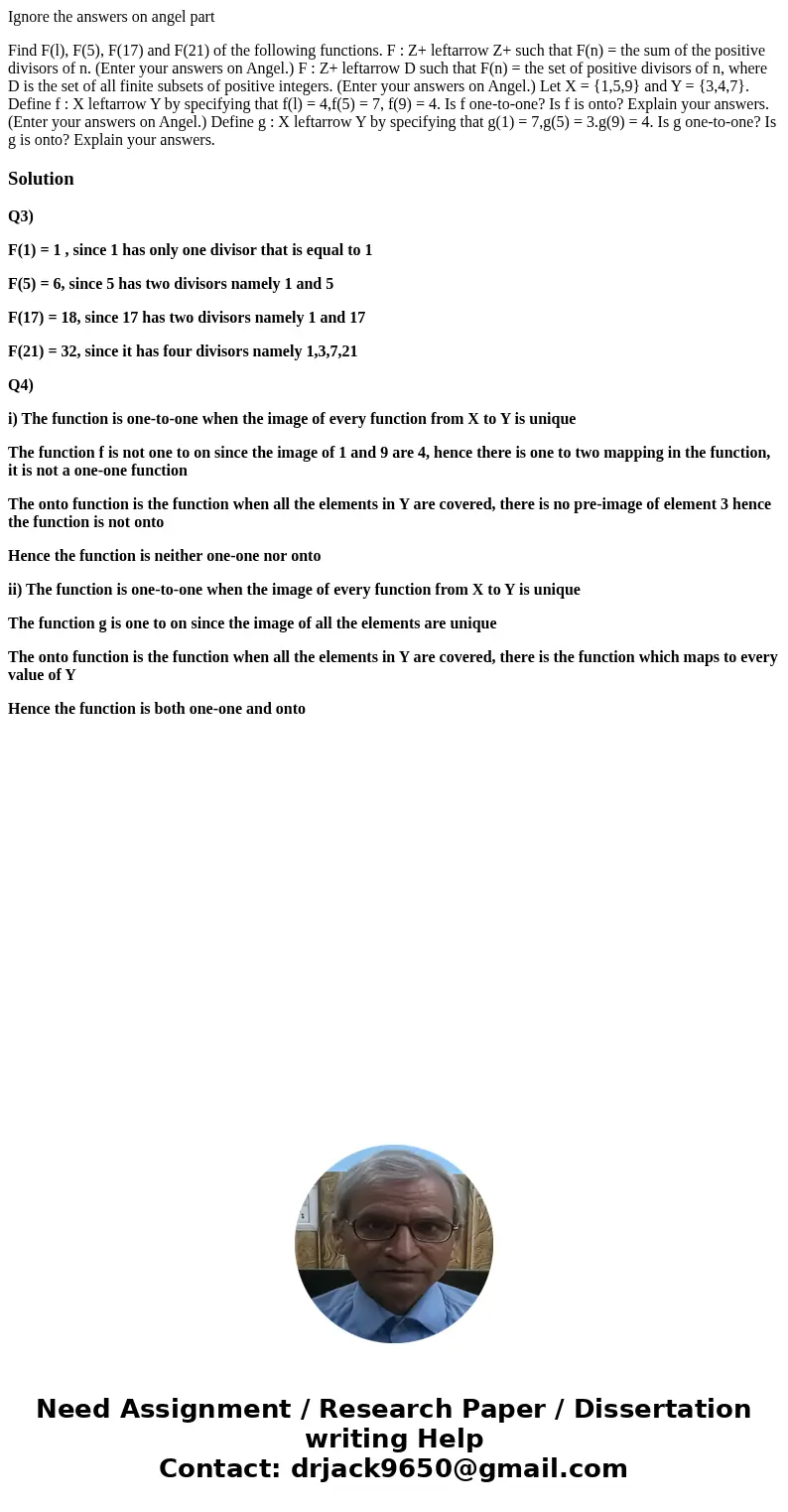Ignore the answers on angel part Find Fl F5 F17 and F21 of t
Ignore the answers on angel part
Find F(l), F(5), F(17) and F(21) of the following functions. F : Z+ leftarrow Z+ such that F(n) = the sum of the positive divisors of n. (Enter your answers on Angel.) F : Z+ leftarrow D such that F(n) = the set of positive divisors of n, where D is the set of all finite subsets of positive integers. (Enter your answers on Angel.) Let X = {1,5,9} and Y = {3,4,7}. Define f : X leftarrow Y by specifying that f(l) = 4,f(5) = 7, f(9) = 4. Is f one-to-one? Is f is onto? Explain your answers. (Enter your answers on Angel.) Define g : X leftarrow Y by specifying that g(1) = 7,g(5) = 3.g(9) = 4. Is g one-to-one? Is g is onto? Explain your answers.Solution
Q3)
F(1) = 1 , since 1 has only one divisor that is equal to 1
F(5) = 6, since 5 has two divisors namely 1 and 5
F(17) = 18, since 17 has two divisors namely 1 and 17
F(21) = 32, since it has four divisors namely 1,3,7,21
Q4)
i) The function is one-to-one when the image of every function from X to Y is unique
The function f is not one to on since the image of 1 and 9 are 4, hence there is one to two mapping in the function, it is not a one-one function
The onto function is the function when all the elements in Y are covered, there is no pre-image of element 3 hence the function is not onto
Hence the function is neither one-one nor onto
ii) The function is one-to-one when the image of every function from X to Y is unique
The function g is one to on since the image of all the elements are unique
The onto function is the function when all the elements in Y are covered, there is the function which maps to every value of Y
Hence the function is both one-one and onto

 Homework Sourse
Homework Sourse